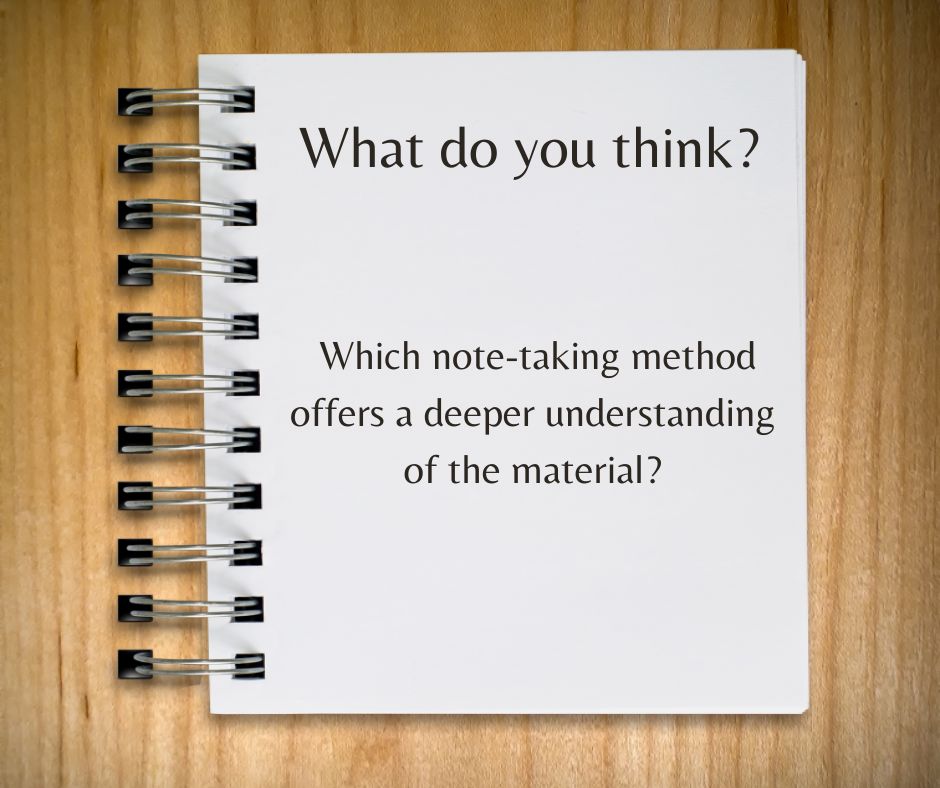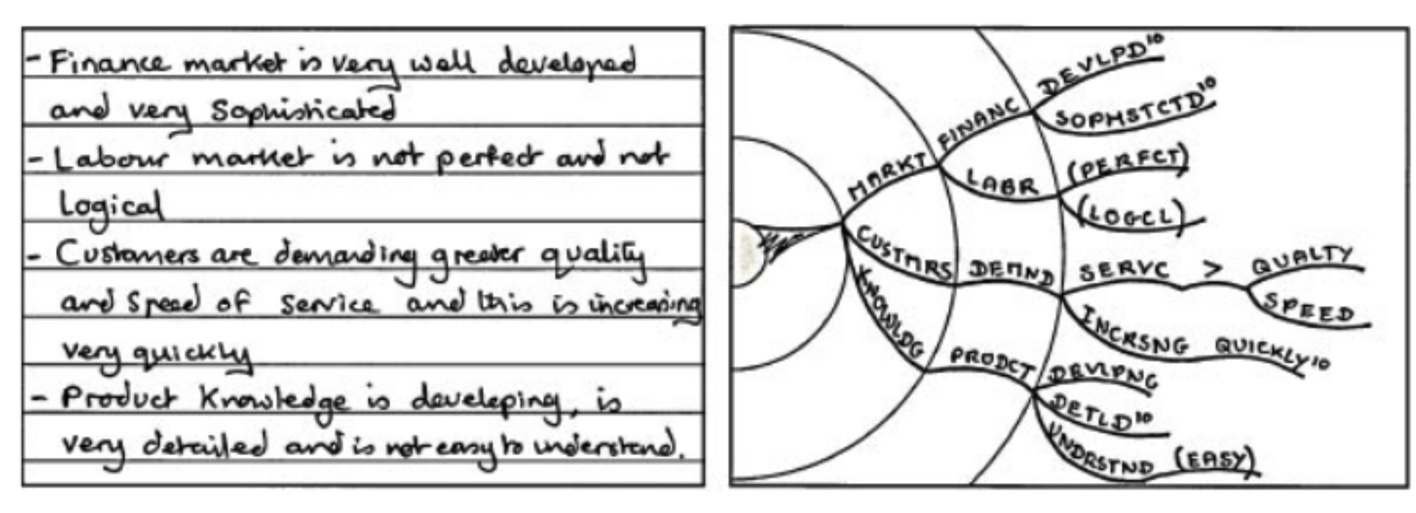Note-Taking as a Learning Strategy

When you take notes, you're not just writing stuff down; you're actually creating two types of memory - one on paper and one inside your brain. This isn't just a storage trick; it helps you remember things better. Think of it as doubling your memory power.
Interestingly, despite its importance, very few students are taught basic note-taking skills, even though they are expected to take extensive notes in various academic disciplines (1).
Think about it: did you learn how to take notes at school?
This article explains WHY note-taking is a learning technique you should try and HOW to use this technique to improve your learning.
In this article
Why Note-Taking Enhances Your Learning
Note-taking supports your learning because it serves two functions: recording information and aiding reflection. First, you take notes to create a stable external memory of the course material, and later, you can use them for your study sessions and exams. While some students opt for simple "copy-regurgitate" strategies, where you transcribe information as it is, others like to use more intricate "reformulation-interpretation" methods, involving paraphrasing and interpreting the content. With this method, you not only record the core information but also digest it, internalise it, and express it in a way that makes sense to you.

Although less common, reformulation-interpretation note-taking may offer you a deeper understanding of the material.
Another benefit of note-taking is helping your short-term memory. When you take notes, you're reducing the cognitive load on your working memory. Simply said, notes serve as an external memory that helps keep intermediate information or solutions you need to understand or solve problems.
So, taking notes while studying can support your learning from various perspectives. However, not all note-taking is the same - they can differ in structure and organisation.
Effective Note-Taking Strategies
Many studies exploring note-taking strategies showed that remembering information is most effective with non-linear strategies (2, 3).
Linear Note-Taking
Linear note-taking is the traditional and straightforward method of jotting down information sequentially, usually in the order in which it's presented. It's like writing a narrative or creating a list.
Here's how it works:
- Structure: Your notes follow a linear structure, just like a book or a lecture. You record the information from beginning to end, often in paragraphs or bullet points.
- Organisation: Linear notes are organised chronologically. You start at the beginning and continue in the order in which the information is presented.
Non-Linear Note-Taking
Non-linear note-taking is a more creative and flexible approach. Instead of following a strict chronological structure, it allows you to organise information in a way that makes sense to you.
Here's how it differs:
- Structure: Non-linear notes are visually structured, often using diagrams, concept maps, charts, or mind maps. They use spatial relationships to connect ideas.
- Organisation: Information isn't confined to a linear sequence. You can place related ideas wherever they fit best, creating a network of interconnected concepts.

Interesting fact: non-linear note-taking is also beneficial for people with dyslexia. In one study (4), people with dyslexia who took non-linear notes performed as well as or better than the controls who did not use this approach.
However, only taking notes while learning, even if they are non-linear, is not enough to successfully retain and recall information.
Improving Learning Through Note-Taking: Tips for Students
Research shows how you can improve your note-taking skills to enhance learning. Here are some key insights and practical tips based on these findings:
- Review and Re-read Your Notes: Make a habit of revisiting your notes multiple times. Research has shown that this practice is instrumental in reinforcing your understanding and retention of the material. The more you engage with your notes, the better you'll remember the content.
- Choose Effective Note-Taking Techniques: Experiment with different note-taking techniques, such as summarising, highlighting, or rewriting (summarisation has been found particularly effective). Select the method that aligns best with your learning style and the depth of understanding you want to achieve.
- Organise Your Notes Strategically: Structure your notes using a non-linear approach rather than linear outlines. This approach enhances conceptual connections between pieces of information. Consider using keyword tree diagrams or mind maps to aid in knowledge structuring and information retrieval.
- Practice Active Note-taking: Actively engage with the material as you take notes. Don't merely transcribe; strive to understand and interpret the information. This approach deepens your comprehension and reinforces memory retention.
- Experiment and Adapt: There's no one-size-fits-all approach to note-taking. Experiment with various techniques and strategies to discover what works best for you. Adapt your note-taking methods to different subjects and learning contexts.
Incorporating these research-based tips into your note-taking routine can optimise your learning process, improve your understanding of the material, and enhance your academic performance. Effective note-taking is a valuable skill that empowers you to grasp complex concepts and retain essential knowledge effectively.
Conclusion
In conclusion, note-taking is a powerful tool that offers numerous benefits for learning and memory enhancement. This technique, especially the non-linear approach, actively engages your mind, transforming it into a dynamic process rather than a passive recording task. By actively summarising, reformulating, or interpreting information in your own words, you not only capture key insights but also promote a deeper understanding of the subject matter. This engagement strengthens information retention and recall, making note-taking a valuable technique in your academic journey. To harness its full potential, remember that effective note-taking goes beyond transcription; it's about immersing yourself in the material, connecting concepts, and crafting notes that truly facilitate learning. So, the next time you're in a lecture or reading a textbook, seize the opportunity to transform your notes into a roadmap to success.
Suggested reading on the topic



